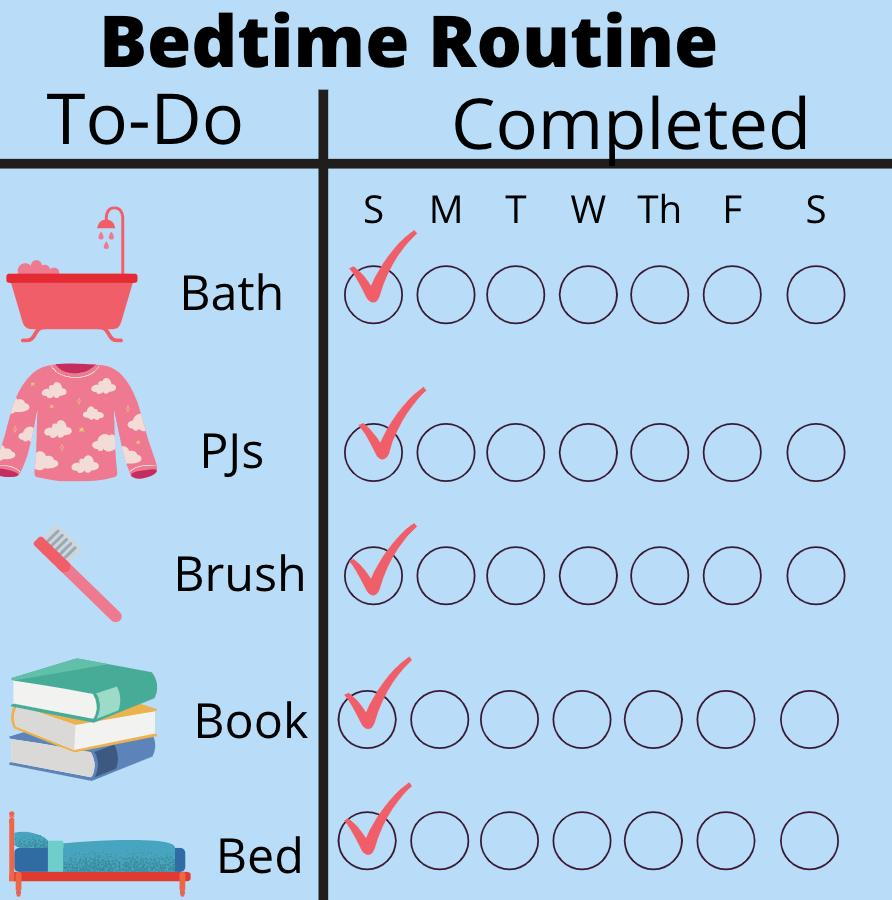
As summer days are dwindling, families are getting back into the school year routines. The American Academy of Pediatrics emphasizes the importance of prioritizing sleep for children. Children with better sleep habits tend to have better attention, behavior, and concentration throughout the day. Not sure where to begin? Here are 5 bedtime tips to help with the back to school transition.
Stay active during the day
One way to ensure that your children are tired at bedtime, is to encourage physical activity during the day. Physical activity done outside is best for children because research has shown that children sleep better when they’re exposed to sunshine during the day. This is because sunshine helps to produce the hormone, melatonin, and melatonin helps signal when it is time for sleep.
Activities such as swimming, soccer, and trips to the playground can be a great way for children to release their extra energy and have exposure to sunshine. Just be sure to leave plenty of time between physical activity and bedtime, so your child has enough time to wind down.
Limit screen time before bed
Having ample time to relax at the end of the day can make falling asleep easier. Activities such as reading, cuddling, listening to soothing music, or dimming the lights can help your child to wind down before bed.
Avoid having devices in your child’s bedroom. Activities such as texting, playing games, or watching shows can stimulate the brain before bed. In addition to stimulation, the light from these devices can interfere with your child’s sleep cycle which can make sleep more challenging.
Slowly transition to an ideal bedtime
Late nights and late mornings are typical during summer vacation, but with school around the corner it’s important to slowly get your child’s body accustomed to earlier bedtimes and earlier wake times. This can be done by setting your child’s bedtime earlier by 15 minutes per day, over the course of 1-2 weeks. For best sleep results, it’s also important for your child to wake up at the same time each day, even on the weekends.
Set up a quality sleep environment
Your child’s sleep environment is important to guarantee a quality night of sleep. For best sleep, your child’s room should be very dark; installing black out curtains can help your child fall asleep easiest. Your child’s room should also be quiet, with limited distractions; try removing toys and games to make the environment more restful. Studies have also shown that children sleep better in colder environments. Try keeping your child’s bedroom between 65-67 degrees fahrenheit for the best sleeping conditions.
Create a bedtime routine
Believe it or not, children thrive on routines. They seek the stability of structure that a routine offers. By developing a bedtime routine, you are teaching your child strong habits for them to be healthy adolescents and adults. If your child doesn’t have a bedtime routine, consider starting today.
The key to having your child follow a routine is consistency. Work together with your child to develop a routine that works for your family, and then stick to it. Bedtime routines can include a bath or shower, teeth brushing, reading a book, singing a song, and then falling asleep. Routines work best when they are followed every day of the week, including weekends.
A visual schedule can be helpful in ensuring that all family members are on the same page. Place the visual schedule in an area that everyone can see, like the bedroom door, or on the bathroom mirror. Allow your child to “check off” when each step is complete. Here’s an example of a bedtime visual schedule that could work for your family.


